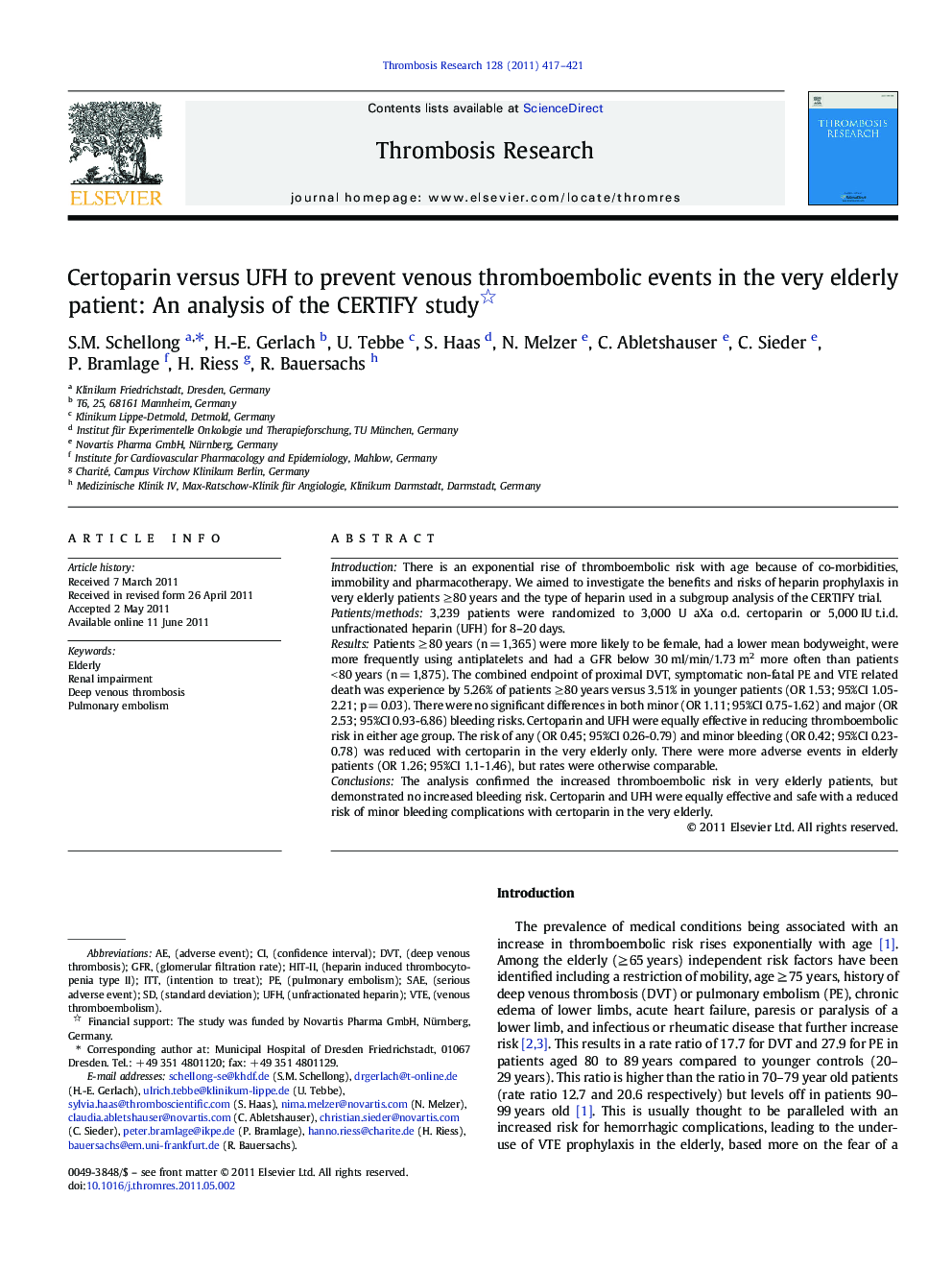| Article ID | Journal | Published Year | Pages | File Type |
|---|---|---|---|---|
| 3029047 | Thrombosis Research | 2011 | 5 Pages |
IntroductionThere is an exponential rise of thromboembolic risk with age because of co-morbidities, immobility and pharmacotherapy. We aimed to investigate the benefits and risks of heparin prophylaxis in very elderly patients ≥ 80 years and the type of heparin used in a subgroup analysis of the CERTIFY trial.Patients/methods3,239 patients were randomized to 3,000 U aXa o.d. certoparin or 5,000 IU t.i.d. unfractionated heparin (UFH) for 8–20 days.ResultsPatients ≥ 80 years (n = 1,365) were more likely to be female, had a lower mean bodyweight, were more frequently using antiplatelets and had a GFR below 30 ml/min/1.73 m2 more often than patients < 80 years (n = 1,875). The combined endpoint of proximal DVT, symptomatic non-fatal PE and VTE related death was experience by 5.26% of patients ≥ 80 years versus 3.51% in younger patients (OR 1.53; 95%CI 1.05-2.21; p = 0.03). There were no significant differences in both minor (OR 1.11; 95%CI 0.75-1.62) and major (OR 2.53; 95%CI 0.93-6.86) bleeding risks. Certoparin and UFH were equally effective in reducing thromboembolic risk in either age group. The risk of any (OR 0.45; 95%CI 0.26-0.79) and minor bleeding (OR 0.42; 95%CI 0.23-0.78) was reduced with certoparin in the very elderly only. There were more adverse events in elderly patients (OR 1.26; 95%CI 1.1-1.46), but rates were otherwise comparable.ConclusionsThe analysis confirmed the increased thromboembolic risk in very elderly patients, but demonstrated no increased bleeding risk. Certoparin and UFH were equally effective and safe with a reduced risk of minor bleeding complications with certoparin in the very elderly.
